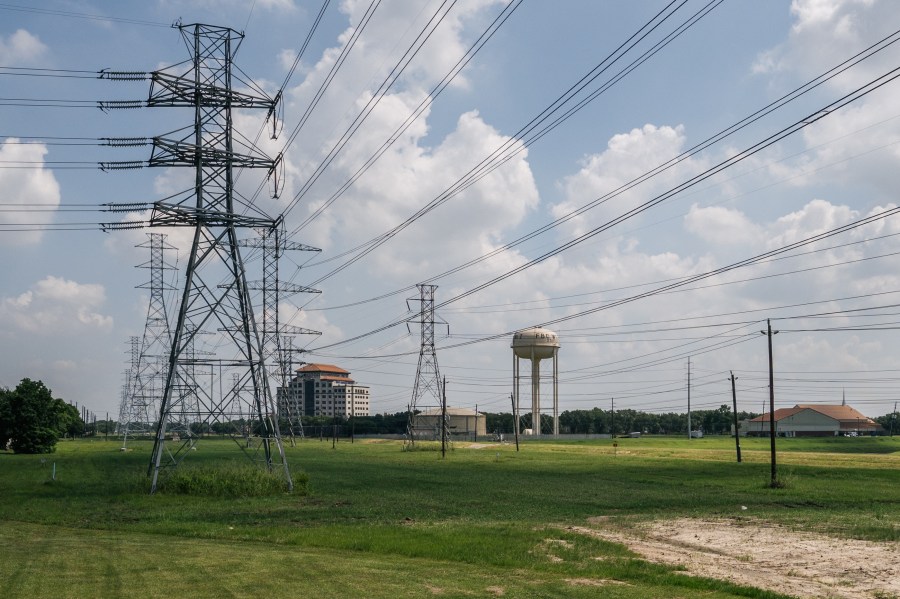California’s grid withstood the heat wave with texts, batteries and conservation

Last week, Californians were hit with a scorching heat wave. In some parts of the Golden State, temperatures soared as high as 117 degrees.
And as households blasted their air conditioners in the afternoons to keep cool, it placed extreme stress on the state’s power grid.
So, for the first time, Californians received an emergency text alert asking citizens to conserve electricity to avoid blackouts. And it worked.
Importing electricity isn’t enough anymore, said Severin Borenstein, who researches energy markets at University of California, Berkeley’s Haas School of Business. The following is an edited transcript of his conversation with Kimberly Adams.
Severin Borenstein: When we have these sorts of heat waves, there’s a scramble to try to line up additional power from elsewhere in the Western grid. One of the problems we’ve seen in the last few years, though, is that we’ve seen more West-wide heat waves. And that means that historically, the source of imports from the Northwest have been much less available because they need the power for themselves.
Kimberly Adams: So what helped California’s power grid avoid blackouts last week?
Borenstein: Well, part of it was the lining up of additional power. Additionally, in the last few years, California has brought on 4,000 megawatts of batteries. And it’s really critical, because California relies quite a bit on solar power these days. And of course, as the sun is setting, it produces less power. And then when it goes down, it produces no power. And we need something to fill in. And that’s where the batteries come in. They charge in the middle of the day when we are awash in solar power, and they discharge later in the afternoon, when the solar is starting to wane and help fill in that difference. On the other side, we had tremendous response on the demand side. When things got super tight, the governor actually put out an alert over cellphones saying that the grid was running very short of power, and please reduce consumption right away. Almost immediately, we dropped about 1,000 megawatts out of the 50,000 megawatt load within about five minutes.
Adams: Wow. How unusual is that strategy?
Borenstein: To my knowledge, we’ve never used the cellphone-alert approach before. And it helped avert the need for rotating outages.
Adams: Given that what seems to be a success with that one flex alert, how do you imagine that strategy being deployed moving forward?
Borenstein: Well, I don’t think we can really count on voluntary demand adjustment going forward. I think, and there is evidence from research, if you keep asking customers to voluntarily change their demand patterns, that help wanes over time. What is much more long lasting is price incentives. If people can actually save money by reducing their electricity demand, there’s a lot of evidence that they do that. And California has some experience with this, with lowering prices most of the time, and then having higher prices on the worst days of the year. The evidence is common that when you [have] these what are called critical peak pricing events, you can typically get customers to lower their demand by 15% or 20%. And that would have been plenty for California to avoid any sort of tight grid last week.
Adams: What are some of the broader takeaways from last week’s heat wave and the responses to it?
Borenstein: Well, the first takeaway, of course, is that climate change is coming. And it’s real. The second takeaway, I think, is that California is running a grid that’s very reliant on renewable energy. We can do that, and I think we can continue to expand that. But we are going to have to make other changes as well. We’re going to need more battery power, we’re going to need more long-duration storage, and we especially are going to need to be more cognizant of when people use electricity.
Adams: So if a big part of responding to these peaks in demand is just getting people to reduce that demand, where does that show up? What has to happen?
Borenstein: On the California grid, on a typical summer afternoon, the peak demand is about 30,000 megawatts. And on the really hot days, it goes to about 50,000 megawatts. That difference, a two-thirds increase, is almost entirely air conditioning. The thing people can do most effectively to help meet demand is to adjust their air conditioning settings. That just swamps all of the other electricity uses on those hottest days.
Adams: One of the reasons that you cited that California was able to sort of withstand that heatwave was, you know, because of the additional power online from renewable energy and from batteries. Are other states as prepared?
Borenstein: You never know how prepared you are until you hit these extremes. I think, and the federal regulators have pointed out, everywhere in the country, there’s a lot more vulnerability to electricity shortages and to reliability disruptions due to weather.
The future of this podcast starts with you.
Every day, the “Marketplace Tech” team demystifies the digital economy with stories that explore more than just Big Tech. We’re committed to covering topics that matter to you and the world around us, diving deep into how technology intersects with climate change, inequity, and disinformation.
As part of a nonprofit newsroom, we’re counting on listeners like you to keep this public service paywall-free and available to all.
Support “Marketplace Tech” in any amount today and become a partner in our mission.


















